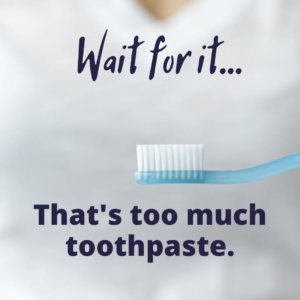If you look at the great videos of how-to-floss on YouTube you will find one common denominator. They are all about two minutes long. If you’re comfortable flossing, it should not take a lot of time to incorporate it as a regular part of your home care. Yet, of all the routines people use to keep your teeth and mouth healthy, flossing is the one that people most often let fall by the wayside.
“Flossing isn’t something you should see as an add-on,” Dr. Adam Diesburg says. “You do really need to do it. Considering how low-tech it is, it’s incredibly effective.”
Why floss?
The reasons to floss are many.
- Flossing removes the bacteria hiding between the teeth that can cause cavities and periodontal disease (disease of the gums). If you are only brushing, your toothbrush can’t reach these very vulnerable spaces between your teeth.
- Flossing can turnaround gingivitis in as little as 2 weeks
- Flossing does about 40% of the work of keeping sticky bacteria, or plaque, off your teeth
- Flossing regularly means your gums won’t be bleeding
- Flossing can decrease the chance of having a pre-term baby for pregnant women
- Flossing has been linked to a lower incidence of heart disease, though the science behind it isn’t clear
- Flossing makes your breath smell better
- Flossing regularly makes your regular dental cleanings more comfortable
- Flossing is one of the Top Eleven Things You Can Do to Live Longer (#2)
Choosing a floss
Most flosses will work fine for flossing, but we recommend Oral B Glide. It slides easily in tight spaces, has a minty taste, stimulates the gums gently and has a waxed surface that is easy to hold on to. If wrapping floss around your teeth is difficult, there are other products on the market such as floss picks that can do the trick.
Learning to floss If you don’t have time to come to our office and learn directly from Nick or Angela, online videosare the best way to learn how to floss. But here is a quick rundown of the process:
- Start with about 18 inches of floss. Wrap most of it around the middle finger of one hand, the rest around the other middle finger.
- Grasp the floss tightly between your thumbs and forefingers, and use a gentle shoeshine motion to guide it between teeth.
- When the floss reaches the gum line, form a C shape to follow the contours of the tooth.
- Hold the floss firmly against the tooth, and move the floss gently up and down.
- Repeat with the other tooth, and then repeat the entire process with the rest of your teeth, unspooling fresh sections of floss as you go along.
Here is one example:
How often?
We recommend flossing every day as part of your tooth routine. Once every three days should be the bare minimum for flossing. It’s never too late to start. And while habits are hard to change, if you can keep it up for a month, chances are good that you can make it a regular part of your day. Your teeth — and your gums — will thank you.
Has it been a while since your last cleaning and exam? Schedule today by calling 503-472-2222.




